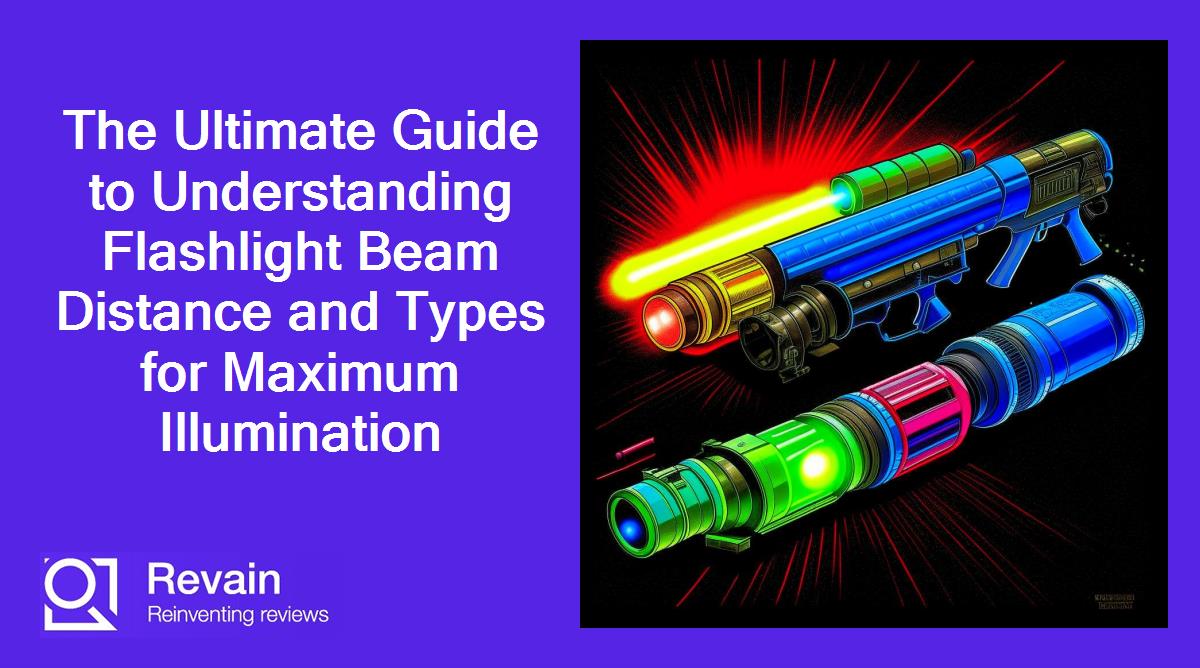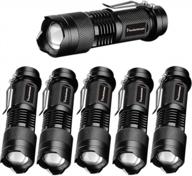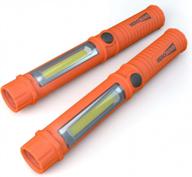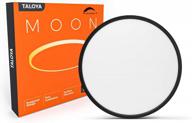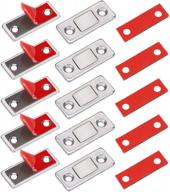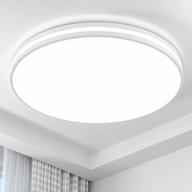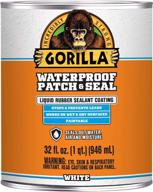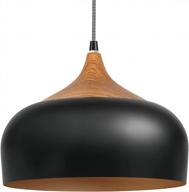The Indispensable Flashlight - Your Ultimate Nighttime Companion
Flashlights are one of those things we don't think much about - until we desperately need one. Power outages, accidents, and emergencies can happen any time, leaving you literally in the dark. But with the right flashlight by your side, you'll always have a trusty companion to light your way.
A Brief History of Portable Light
For most of human history, fire was our only source of portable illumination. Carrying a torch meant managing a live flame, not always the safest or most convenient option. Candles and kerosene lamps made portable light easier but had limitations on brightness and runtime.
The first battery-powered electric flashlights introduced in the late 19th century were bulky and weak. But with advances in battery and bulb technologies throughout the 20th century, flashlights became smaller, brighter, and more efficient. Today's LED flashlights represent the state-of-the-art in portable illumination.
Why Every Household Needs Flashlights
While we often take electric lighting for granted, power outages frequently occur from storms, accidents, or grid failures. Without power, familiar environments quickly become dark and treacherous. Flashlights are a low-cost insurance policy against the inevitable blackouts we all experience.
Beyond outages, flashlights offer greater flexibility and safety any time you need portable light:
- Emergency evacuation when the main lights fail
- Nighttime navigation around the house or property
- Safely accessing fuse boxes or circuit breakers
- Illuminating paths, stairs, or driveways at night
- Locating keys or valuables dropped in low light
- Late night tasks like checking on pets or children
Choosing the Right Flashlight
With a dizzying array of flashlights on the market, how do you choose the right one? Key factors include:
| Feature | Considerations |
|---|---|
| Brightness | Maximum and minimum light levels, beam distance for your needs |
| Battery Type | Runtime, replacement cost, availability, rechargeability |
| Durability | Impact and water resistance for your environment |
| Size and Weight | Portability and ease of storage/carry |
The best flashlights offer long-running light with multiple modes, durable construction, and intuitive controls. Quality needn't be expensive - many affordable yet reliable models exist.
Stay Prepared With a Trusted Flashlight
Don't be left in the dark during the next power outage or emergency. Keep reliable flashlights handy in your home, car, office, and bags. Let them light your way during life's unexpected moments.
Flashlights provide inexpensive insurance against darkness. Don't wait to get caught without one when you need it most!
Choosing the Best Flashlight - Key Features to Look For
With the wide range of flashlights available today, it can be hard to know what to look for when picking the right one for your needs. Certain key features determine how well a flashlight will perform.
Light Output
The most important specification is light output. This governs the brightness and beam distance of your flashlight:
- Lumens - The total light output. Higher lumens mean a brighter beam.
- Beam Distance - The maximum distance the beam will reach while still providing usable light. Look for at least 100 meters of reach.
- Candela - The intensity of the beam's brightest spot. Higher candela gives more focused light.
Top products in 🔦 Flashlights
Runtime
Your flashlight is useless without battery power, so runtime is key:
- Battery Type - Alkaline, lithium, NiMH, or Li-ion. Each has pros and cons for capacity and cost.
- Runtime - The length of time batteries will last on high and low modes.
Durability
Look for water, impact, and crush resistance ratings:
- IPX Rating - Standard for water ingress protection. IPX7 and above means waterproof.
- Impact Resistance - Ability to withstand drops. 2-10 meters is ideal.
- Crush Resistance - How much compressive force the light can take. Over 200 pounds is good.
Other Features
- Size/Weight - Important if carrying daily or on long treks.
- Modes - Low, medium, high options for versatile light levels.
- Special Modes - Strobe, SOS, or red light for signaling or preserving night vision.
- Price - Set a budget and look for best value at each level.
Choosing a flashlight with the right features for your needs ensures you get a light you can rely on whenever and wherever you need it.
LED vs Incandescent Flashlights - Pros and Cons
When it comes to flashlights, the classic incandescent bulb has mostly been superseded by LED technology. But each type of flashlight still has advantages and drawbacks.
Brightness
Incandescents produce light by heating a tungsten filament, while LEDs generate light via electrons moving through a semiconductor. This gives LEDs an edge:
- LEDs emit more lumens per watt, giving higher maximum brightness.
- LEDs maintain consistent output as batteries drain. Incandescent output declines steadily.
- LEDs focus light into a tighter beam, while incandescents spread across a wider angle.
For example, a 300 lumen LED flashlight will appear brighter than a 300 lumen incandescent thanks to its focused beam.
Runtime
No contest here - LEDs are far more energy efficient:
- LEDs convert over 50% of energy into light, incandescents just 10-15%.
- This gives LEDs up to 10x or more runtime from the same batteries.
- Runtime for an LED flashlight can be dozens of hours, compared to just several for an incandescent.
With their minimal power demands, LED flashlights will run for days rather than just hours of continuous use.
Durability
LED emitters are solid state with no fragile filaments. This gives them an advantage in shock and vibration resistance.
- LEDs withstand drops and impacts that would break an incandescent bulb's glass envelope and filament.
- Vibration from activities like motorcycling also takes a heavier toll on incandescent bulbs.
So for duty flashlight use, LEDs hold up better to inevitable drops and hard knocks in the field.
The Verdict
For most uses today, LED outperforms incandescent. Only nostalgia keeps incandescent on the market. But for some specialty uses like signaling or preserving night vision, incandescent remains an option. Either way - carry a reliable flashlight and don't get caught in the dark!
Choosing the Right Flashlight Batteries
Your flashlight is only as good as the batteries powering it. Choosing the right type and quality of batteries for your flashlight's needs is key to ensuring optimal performance. Here are the key factors to consider:
Similar products
Battery Life
Runtime is critical - a flashlight does you no good with dead batteries! Battery life is affected by:
- Capacity - Measured in mAh. Higher capacity means longer runtime.
- Temperature - Cold weather saps battery life. Lithium batteries handle temperature extremes better than alkaline.
- Shelf Life - Alkaline batteries lose power even when unused. Lithium batteries retain charge for 10+ years.
For extended runtimes, choose high-capacity lithium batteries rather than lower-capacity alkaline cells.
Cost
Disposable vs rechargeable batteries have different costs:
- Disposable - Alkaline offer the best value, lithium cost 3-4x more but last 4x longer.
- Rechargeables - NiMH cost more initially but pay for themselves after a few recharge cycles. Lower operating costs.
Frequent use favors rechargeables, while sporadic use leans towards disposables.
Rechargeability
For flashlights supporting rechargeables, options include:
- NiMH - Inexpensive, lower capacity. Must be removed from light for charging.
- Li-ion - Higher cost, higher capacity. Can charge via USB while in flashlight.
Li-ion offers convenience, but has higher upfront cost. NiMH work well for removable batteries.
Another interesting products
Fit
Ensure proper battery fit - mismatched batteries can damage your light. Compare battery specifications to flashlight's requirements for:
- Battery type - alkaline, lithium, NiMH, etc.
- Battery size - AAA, AA, C, D, CR123A, etc.
- Voltage - 3V, 4.5V, etc.
- Protected vs unprotected (for Li-ion).
With the right batteries installed, your flashlight will deliver optimal, reliable performance.
Understanding Flashlight Beams - Distance and Type
A flashlight's beam distance and type are key factors influencing its real-world performance. Selecting a light with optimal beams for your use case ensures it provides the illumination you need.
Beam Distance
This specifies how far the beam will shine while maintaining usable brightness.
- Shorter distance beams under 100m suit close-range use indoors or near the body.
- Medium distance beams of 100-200m work well for general outdoor use.
- Long 200m+ beams allow scanning large areas at a distance.
For example, a 100m beam flashlight is great for camping, while a 300m search and rescue light can spot objects much farther away.
Beam Types
Beam profile affects the spread and focus of light.
- Flood - Broad, diffused beam lights up a wide area useful for close-range task lighting.
- Spot - Long and focused like a laser pointer. Intense center spot picks out distant objects.
- Adjustable - Continuously focus beam from flood to spot.
Flood beams prevent tunnel vision but lack distance. Spot beams see faraway but only illuminate a small area.
Real World Examples
- An electrician working in a crawlspace needs a wide flood beam to see all around a close area.
- A boater scanning for buoys uses a narrow spot beam to cut through fog over long distance.
- A spelunker uses an adjustable beam, flooding caves for navigation and spotting formations.
Maximizing Performance
Consider your lighting needs, then choose an optimal beam distance and type:
- Flood beam for close-range area illumination.
- Spot for identifying distant objects.
- Adjustable for versatility between flood and spot modes.
- 100m+ beam distance for seeing farther.
With the right beam profile, your flashlight becomes a high-performance lighting tool for any situation.
Getting the Most from an Amazon Prime Subscription for Buying Flashlights
An Amazon Prime membership provides a number of benefits when buying products like flashlights. Here are some tips on using Prime to your advantage:
Take Advantage of Free Shipping
Prime members get free two-day shipping on most items. This allows you to order flashlights and accessories without paying shipping fees. That makes it more affordable to buy multiple items while comparing different models.
Utilize Free Returns
Prime provides free returns on items within 30 days of purchase. This makes it easy to order several flashlights to test and compare. Return the ones that don't meet your needs without hassle.
Buy with Confidence
The wide selection and real customer reviews on Amazon allow you to research and choose the best rated flashlights for your uses. Prime's guarantee means you can buy with confidence.
Take Advantage of Lightning Deals
Watch for Prime-exclusive lightning deals on flashlights. These limited time sales offer deep discounts on top brands allowing you to save substantially.
Utilize Prime Borrowing Library
Read free Kindle ebooks on flashlights and other accessories to gain knowledge before making purchase decisions.
With its many perks, an Amazon Prime membership can be a worthwhile investment for frequent flashlight buyers. Compare models hassle-free until you find the ideal lights for your specific needs.
What Are The Most Important Features To Consider When Buying A Flashlight?
When buying a flashlight, there are several important features to consider. Here are some of the most important ones based on the search results:
- Brightness: The brightness of a flashlight is measured in lumens and determines how well it illuminates an area. Consider the intended use of the flashlight and choose a brightness level that suits your needs.
- Battery life: The battery life of a flashlight is an important factor to consider, especially if you plan to use it for extended periods. Look for flashlights with long battery life or those that are rechargeable.
- Durability: A flashlight should be durable enough to withstand rough handling and exposure to the elements. Look for flashlights made of high-quality materials that are waterproof and shock-resistant.
- Size and weight: The size and weight of a flashlight can affect its portability and ease of use. Consider the intended use of the flashlight and choose a size and weight that suits your needs.
- Beam distance: The beam distance of a flashlight determines how far it can illuminate an area. Consider the intended use of the flashlight and choose a beam distance that suits your needs.
- Control method: The control method of a flashlight determines how easy it is to use. Look for flashlights with intuitive controls that are easy to operate in low-light conditions.
- Additional features: Some flashlights come with additional features such as strobe modes, adjustable beam angles, and water resistance ratings. Consider these features when making your purchase to ensure that you get the best flashlight for your needs.
What Is The Average Battery Life Of A Flashlight?
The average battery life of a flashlight can vary depending on several factors such as the type of battery, brightness level, and usage. Here are some estimates based on the search results:
It's important to note that the battery life of a flashlight can be affected by several factors such as the type of battery, brightness level, and usage. Therefore, it's recommended to choose a flashlight with a battery life that suits your needs and usage.
How To Extend The Battery Life Of A Flashlight?
Here are some tips to extend the battery life of a flashlight based on the search results:
- Choose the right battery: The type of battery you use can affect the battery life of your flashlight. Lithium batteries have a longer shelf life than alkaline batteries, and rechargeable batteries can save you money in the long run.
- Use the right brightness level: Using a lower brightness level can help extend the battery life of your flashlight. Consider using a lower brightness level when you don't need the full power of the flashlight.
- Keep your flashlight clean: Keeping your flashlight clean can help prevent battery drain. Wipe down the flashlight with a microfiber cloth or an alcohol swab after each use, or every few uses.
- Avoid frequent disassembly: Avoid frequent disassembly of flashlight components, particularly the head, as this can cause wear and tear on the threads and affect the battery life.
- Take good care of your tail switch: The tail switch is a critical component of a flashlight, and taking good care of it can help extend the battery life. Avoid dropping the flashlight or exposing it to moisture, which can damage the switch.
- Use a good heat dissipation flashlight: Heat is generated during the flashlight working, so cooling is necessary. A good heat dissipation flashlight should feel the heat within 1 minute after it is lit up. If the high output is on for an extended period of time, try to keep the flashlight in motion so that the air flowing through the housing carries heat away.
- Modify the battery pack: If you want to extend the battery life of your flashlight, you can modify the battery pack. For example, you can use AA batteries instead of AAA batteries to triple the run time of your flashlight.






